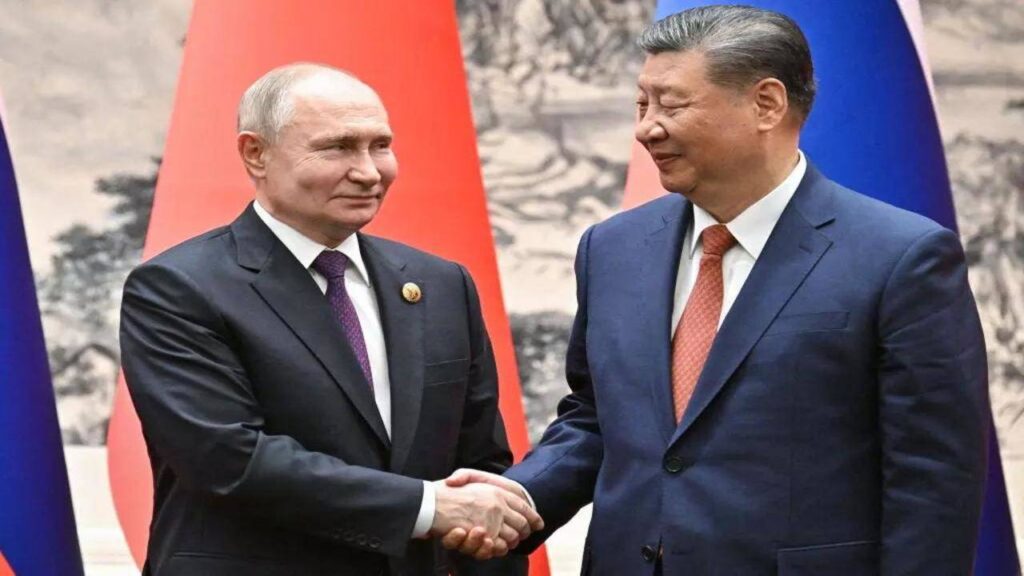Russian and Chinese Leaders Court Southeast Asia Amid Rising BRICS Ambitions
As Russian President Vladimir Putin and Chinese Premier Li Qiang concluded separate high-level meetings in Southeast Asia this week, the presence of the two BRICS economic bloc stalwarts highlighted the region’s growing interest in joining a consortium perceived as a counterbalance to Western-dominated institutions.
Malaysia’s Bid for BRICS Membership
Ahead of Chinese Premier Li’s visit to Malaysia, Prime Minister Anwar Ibrahim articulated his intention to apply for BRICS membership during an interview with Chinese media. This move follows the bloc’s recent expansion, which saw its size double by attracting several Global South countries. These nations were drawn not only by potential financial access but also by the promise of a political platform independent from Washington’s influence.
Thailand’s Strategic Move
Thailand, a traditional US treaty ally, also announced its bid to join BRICS last month. Foreign Minister Maris Sangiampongsa noted that the bloc embodies a “south-south cooperative framework,” aligning with Thailand’s longstanding aspirations to be part of such an initiative. This move underscores the balancing act many Southeast Asian nations undertake, navigating economic ties with China while valuing the security and investment provided by the United States.
A Response to Western Domination
Membership in BRICS is increasingly seen as an expression of frustration with the US-led international order and institutions like the World Bank and International Monetary Fund, which remain dominated by Western powers. Former Malaysian Foreign Minister Saifuddin Abdullah echoed this sentiment, suggesting that BRICS could offer a solution to the unfair global financial and economic architecture.
Political Implications for Russia and China
For Putin and Chinese President Xi Jinping, the growing interest in BRICS also illustrates their success in resisting efforts by the US and its allies to isolate them, particularly over issues like the war in Ukraine and military threats to Taiwan, the Philippines, South Korea, and Japan. Ukraine’s leader, Volodymyr Zelenskyy, recently faced challenges in garnering Asian support for a peace summit in Switzerland, while Putin has solidified defense ties with North Korea and signaled a willingness to arm US adversaries globally.
Expansion and Outreach
BRICS, initially comprising Brazil, Russia, India, China, and South Africa, expanded in January to include Iran, the United Arab Emirates, Ethiopia, and Egypt. This enlargement, primarily driven by China, aims to bolster its global influence. Indonesia was considered a strong candidate to join last year, but President Joko Widodo opted to delay the decision.
Continuing Momentum
Despite opposition from the US and Europe to dealings with Moscow, representatives from 12 non-member nations, including traditional US adversaries like Cuba and Venezuela, as well as countries such as Turkey, Laos, Bangladesh, Sri Lanka, and Kazakhstan, attended a BRICS Dialogue in Russia this month. Vietnam, which upgraded its ties with Washington last year to counterbalance Beijing’s rising influence, has shown “keen interest” in the bloc, according to state broadcaster Voice of Vietnam.
Vietnam’s Diplomatic Balancing Act
Vietnam welcomed Russia’s President this week despite US objections. Citing historical ties dating back to the Cold War and the Soviet era, Vietnam and Russia pledged to enhance defense and energy cooperation. Although it remains unclear how much BRICS was discussed in their closed-door talks, the nations affirmed their commitment to strengthening ties with developing countries, including Vietnam.
Future Prospects for BRICS
BRICS plans to invite non-member countries to its next summit in Kazan, Russia, in October. Hosting the event allows Moscow to demonstrate its resilience against Western isolation over the Ukraine conflict. Although the bloc’s expanding membership poses challenges for reaching consensus on key issues, it continues to attract interest from various countries.
Financial and Development Incentives
BRICS members have pooled $100 billion in foreign-currency reserves, providing a safety net for emergencies. The New Development Bank, modeled after the World Bank, has approved nearly $33 billion in loans for infrastructure projects since 2015, offering an attractive alternative for Southeast Asian nations facing dwindling official development finance.
Residual Negative Sentiment and Strategic Diversification
Former Malaysian Foreign Minister Saifuddin highlighted a persistent negative sentiment toward institutions like the IMF, blamed for exacerbating economic hardships during the Asian financial crisis in the late 1990s through enforced austerity measures. As US-China competition intensifies, smaller countries are increasingly seeking to diversify their alliances.
Washington’s Strategy
The US has strengthened security links in the region, focusing on issues like counter-terrorism and disputes in the South China Sea. However, as former ASEAN Secretary-General Ong Keng Yong noted, the intensifying great power competition leaves limited maneuvering space for smaller nations. By joining BRICS, these countries signal their intent to maintain balanced relations with all major powers, not just the US and its allies.
Source: Bloomberg
